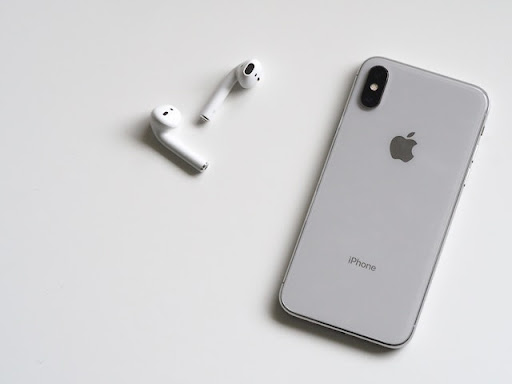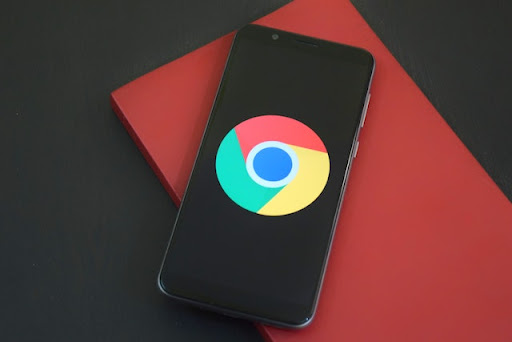What is Wi-Fi Calling and How Does it Work?
November 22, 2022

Are you familiar with Wi-Fi calling, but uncertain about its functionality or how to enable it? Wi-Fi calling enables users to make calls utilising a dependable internet connection rather than relying exclusively on mobile networks. It offers superior call quality, particularly in regions with poor cellular coverage. By harnessing the capabilities of the internet, Wi-Fi calling provides a dependable and convenient communication solution for users worldwide.
Advancing technologies have meant an evolution in the way people keep in touch. While it all started with the land phone, voice calls are now by cellular services and smartphones. Then there are the VoIP calls (voice over internet protocol), also known as IP telephony, which is voice communication with multimedia sessions over the internet. These include WhatsApp or Skype calls over the Internet.
And then there is Wi-Fi calling. Don’t let the term confuse you as it’s just a voice calling service over a wireless internet connection, instead of a cellular signal.
What is Wi-Fi calling?
Wi-Fi calling is a feature that allows users to make phone calls relying on a consistent internet connection, such as a Wi-Fi network, rather than depending solely on telecommunication networks. This technology has gained popularity in recent years due to its numerous advantages and convenience.
Traditionally, phone calls were made using cellular networks, which require strong signal strength for reliable communication. However, there are certain situations where cellular coverage may be weak or unavailable, such as in remote areas or inside buildings with solid thick walls. This is where Wi-Fi calling comes into play.
When Wi-Fi calling is enabled on a compatible device, it uses a Wi-Fi network to transmit voice data instead of relying on a mobile network. This means that as long as you have access to a steady internet connection, you can make and receive calls without any interruption. It is especially useful in places where cellular signals are weak or non-existent.
One of the key advantages of Wi-Fi calling is its ability to provide better call quality. Since Wi-Fi connections tend to be more stable and have higher bandwidth than cellular networks, the audio quality during calls is often clearer and more consistent. This is particularly beneficial when making international calls or talking in areas with poor cellular coverage.
Moreover, Wi-Fi calling can also save you money. If you have a limited voice plan or are travelling internationally, making calls over Wi-Fi can help you avoid expensive roaming charges. It essentially allows you to use your existing voice plan over an internet connection, eliminating the need for additional charges.
To enable Wi-Fi calling, you need a compatible device and a Wi-Fi network with a dependable internet connection. Most modern smartphones and even some landline phones now support this feature. Once enabled, the device will automatically switch to Wi-Fi calling when it detects a strong and secure Wi-Fi network.
Wi-Fi calling is a technology that enables users to make phone calls over an unwavering internet connection. It offers superior call quality, particularly in areas with weak cellular coverage, and can save you money by avoiding roaming charges. With the increasing availability of Wi-Fi networks, this feature has become a valuable addition to modern communication methods. Whether you’re at home, in the office, or travelling abroad, Wi-Fi calling provides a trustworthy and convenient way to stay connected.
How does WiFi Calling Work?
Wi-Fi calling is a technology that allows users to make phone calls over an uninterrupted internet connection, such as a Wi-Fi network, instead of relying solely on wireless networks. Understanding how Wi-Fi calling works involves the interaction between your device, the Wi-Fi network, and the cellular network.
When you initiate a call on a device that supports Wi-Fi calling, such as a smartphone, the device first checks if it has a strong wireless signal. If the cellular connectivity is weak or unavailable, the device looks for an available Wi-Fi network.
Once the device connects to a Wi-Fi network, it establishes a secure connection with the Wi-Fi calling service provided by your mobile carrier. This service acts as an intermediary between your device and the traditional cellular network.
During a Wi-Fi call, your voice is converted into data packets, similar to how data is transmitted over the Internet. These voice packets are then encrypted and sent over the Wi-Fi network to the carrier’s servers. The servers receive the packets and decrypt them, converting them back into voice signals.
The carrier’s servers then route the call to its destination, which can be another Wi-Fi calling device, a traditional landline, or a mobile phone on the cellular network. The recipient’s voice is also converted into data packets, transmitted over the network, and then converted back into voice signals on their end.

It’s important to note that Wi-Fi calling doesn’t rely on a specific type of internet connection, such as fiber or cable. As long as you have a continuous Wi-Fi network with an internet connection, Wi-Fi calling can work effectively. However, a faster and more reliable web connection, such as fiber, can enhance call quality and reduce latency.
In some cases, if you move out of Wi-Fi range during a call, the device may seamlessly transition to a cellular network without interrupting the call. This feature is known as “seamless handover” and ensures a continuous calling experience.
Wi-Fi calling harnesses the power of Wi-Fi networks and internet connectivity to provide an alternative means of making phone calls. It offers better call quality in areas with weak cellular coverage and can save you money by utilising your existing voice plan over Wi-Fi. As Wi-Fi networks continue to expand, Wi-Fi calling has become an increasingly popular and valuable feature for modern communication.
Wi-Fi calling works by transferring cellular data packets over Wi-Fi connections. Sent over the internet, these data packets are transmitted to the cellular network and onto the recipient. However, do note that you need a wireless connection over a smartphone for Wi-Fi calling. A weak Wi-Fi signal can also result in dropped calls. While the new generation of 4G enabled smartphones come with VoLTE option switched on, older smartphones might require you to switch on the HD voice setting.
Once this is enabled, the Wi-Fi calling feature becomes automatically activated when Wi-Fi connection is established. And when this happens, an icon will appear on the top notification bar of your smartphone showing a phone receiver with a Wi-Fi symbol. If you want to ensure that Wi-Fi calling is used, then put the phone on ‘Airplane’ mode before proceeding
WiFi Connection in Kerala
The availability and speed of Wi-Fi connections in Kerala can vary depending on several factors such as location, infrastructure, and service providers.
In recent years, the Kerala government has undertaken initiatives to improve internet access across the state, including the expansion of Wi-Fi connectivity in public spaces. Many government institutions, educational institutions, tourist spots, and commercial establishments now offer free Wi-Fi services to the public.
In terms of internet speed, Kerala has seen notable improvements. The average Wi-Fi speed in Kerala can range from several Mbps (Megabits per second) to even higher speeds in areas with better infrastructure. However, it’s important to note that the actual speed experienced by users can vary based on factors such as network congestion, distance from the Wi-Fi source, and the type of connection (fiber, cable, etc.).
To ensure an uninterrupted and high-speed Wi-Fi connection, it is advisable to choose a reliable service provider and consider factors such as the type of connection (fiber optic connections generally offer faster speeds) and the proximity to Wi-Fi hotspots.
Asianet Broadband has established a strong presence in Kerala, providing internet services to both residential and commercial customers, offering a range of broadband plans with varying speeds to cater to the diverse needs of users. These plans often include Wi-Fi connectivity, allowing customers to connect multiple devices within their homes or offices.
We utilise various technologies to deliver reliable Wi-Fi connections to our customers and deploy a mix of fiber optic and cable networks, which are known for their ability to provide faster and more stable internet speeds compared to traditional DSL connections. Fiber optic connections, in particular, can offer impressive speeds and low latency, enhancing the overall internet experience.
How to Set Up WiFi Calling?
Setting up Wi-Fi calling may vary slightly depending on the device and operating system you are using. However, here is a general guide on how to set up Wi-Fi calling:
- Check Device Compatibility: Ensure that your device supports Wi-Fi calling. Most modern smartphones and some landline phones offer this feature. Verify if your device and carrier support Wi-Fi calling.
- Enable Wi-Fi Calling: On your smartphone, go to the device settings and look for the “Wi-Fi Calling” or “Phone” section. Enable Wi-Fi calling if it is not already enabled.
- Connect to a Wi-Fi Network: Make sure your device is connected to a Wi-Fi network with a stable internet connection. You can connect to a Wi-Fi network by going to the device settings, selecting “Wi-Fi,” and choosing an available network from the list.
- Set E911 Address (Emergency Address): For emergency services, it is important to provide your E911 address. This address is used to determine your location in case you make an emergency call. Check your device settings for the option to set or update your E911 address.
- Carrier Settings Update: In some cases, you may need to update your carrier settings to enable Wi-Fi calling. This update can usually be done over Wi-Fi or by inserting a SIM card from the carrier.
- Test Wi-Fi Calling: Once you have enabled Wi-Fi calling and connected to a Wi-Fi network, you can test the functionality by making a call. Dial a phone number as you normally would, and the call should go through over Wi-Fi instead of the cellular network
WiFi Calling on iPhone

- To turn on Wi-Fi calling, go to Settings > Phone > Wi-Fi Calling.
- If Wi-Fi Calling is accessible, the “Wi-Fi” label will appear in the status bar when accessing Control Center. Subsequently, your calls will be made using Wi-Fi Calling.
- When cellular service is accessible, your iPhone utilises it for emergency calls. However, if you have activated Wi-Fi Calling and cellular service is unavailable, emergency calls may rely on Wi-Fi calling. Your device’s location may be utilised to assist in emergency response efforts when placing an emergency call, regardless of whether Location Services are enabled.
Add a device to use with Wi-Fi calling
- Ensure that the device you wish to add has the most up-to-date software version installed.
- For your iPhone, access Settings > Phone > Wi-Fi Calling.
- Activate the option “Add Wi-Fi Calling For Other Devices.”
- Return to the previous screen and select “Calls on Other Devices.”
- If “Allow Calls on Other Devices” is disabled, enable it. A list of eligible devices will be displayed under “Allow Calls On.”
- Enable Wi-Fi Calling for each device you intend to use.
- Double-check on your iPhone that Wi-Fi Calling and Allow Calls on Other Devices are both enabled and confirm that your device is listed under “Allow Calls On.”
WiFi Calling on Android

- Open the Settings app, then navigate to Network & Internet > Mobile Network > Advanced.
- Tap on the switch next to enable it.
- If you are unable to locate this option, you can search for “WiFi calling” on your phone, and it should direct you to the appropriate menu page.
Advantages of Wi-Fi Calling:
- Enhanced Coverage: Wi-Fi Calling allows you to make and receive calls even in areas with weak network coverage. As long as you have a steady Wi-Fi connection, you can stay connected and enjoy clear voice calls.
- Cost Savings: Wi-Fi Calling enables you to make calls over Wi-Fi networks without using your cellular plan’s minutes. This can be particularly beneficial when making international calls or when you have limited voice minutes in your plan.
- Seamless Transition: Wi-Fi Calling offers a seamless transition between Wi-Fi and cellular networks. If you move out of Wi-Fi range during a call, the call can seamlessly switch to a cellular network without any interruption.
- Improved Voice Quality: Wi-Fi Calling often provides better voice quality compared to traditional cellular calls, especially in areas with a poor cellular signal. This is due to the higher bandwidth and stability of Wi-Fi connections.
- Multi-Device Capability: With Wi-Fi Calling, you can use multiple devices, such as smartphones, tablets, or laptops, to make and receive calls using the same phone number. This flexibility allows you to stay connected across different devices.
- International Roaming: Wi-Fi Calling can be particularly advantageous when travelling abroad. It allows you to make calls to your home country without incurring hefty international roaming charges, as long as you have access to a Wi-Fi network.
- Emergency Calling: In situations where cellular network coverage is limited or unavailable, Wi-Fi Calling can still enable you to make emergency calls as long as you have a Wi-Fi connection. This can be crucial in emergencies when immediate communication is necessary.
Overall, Wi-Fi Calling offers improved connectivity, cost savings, and convenience, making it a valuable feature for individuals seeking reliable and flexible communication options.

